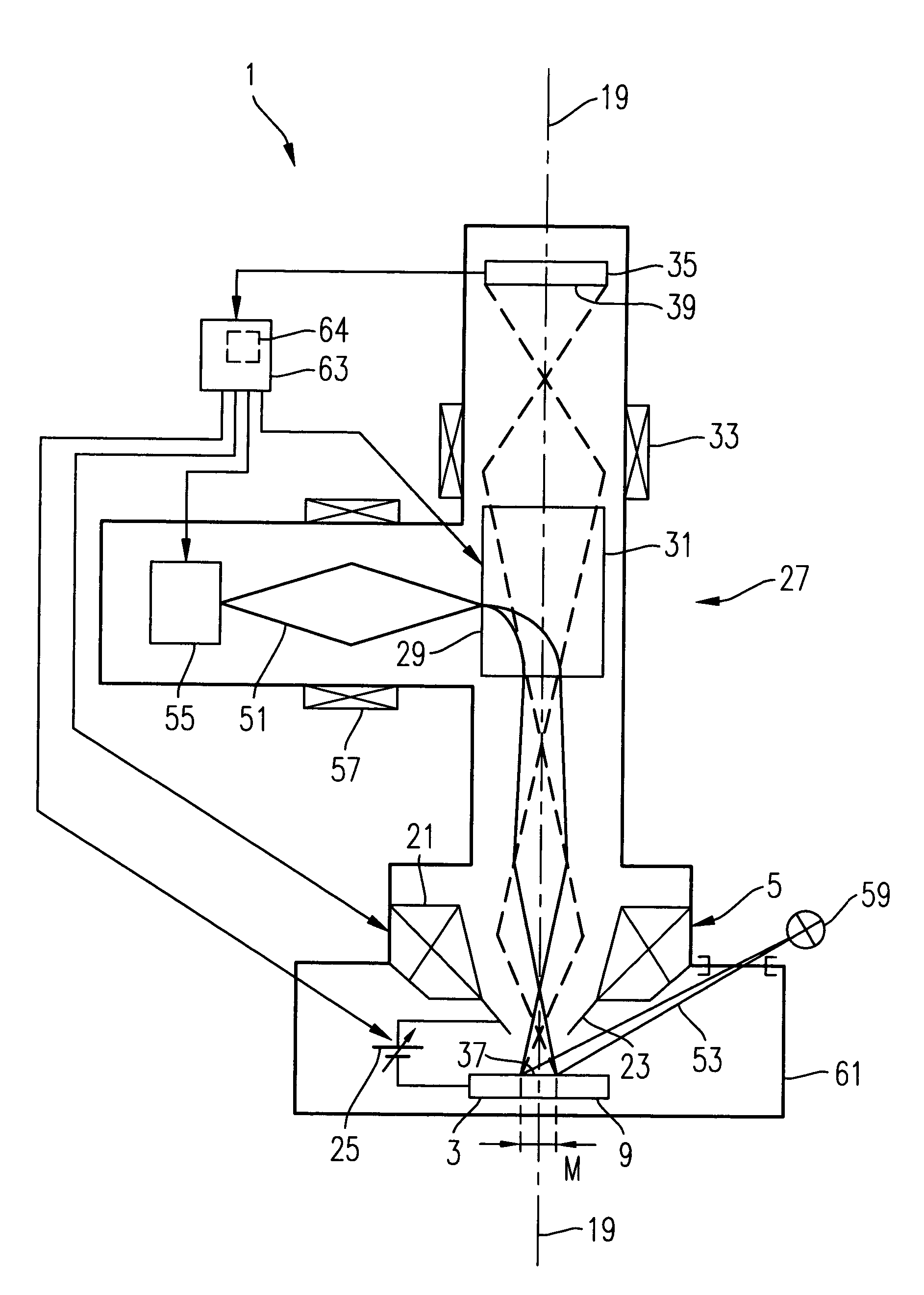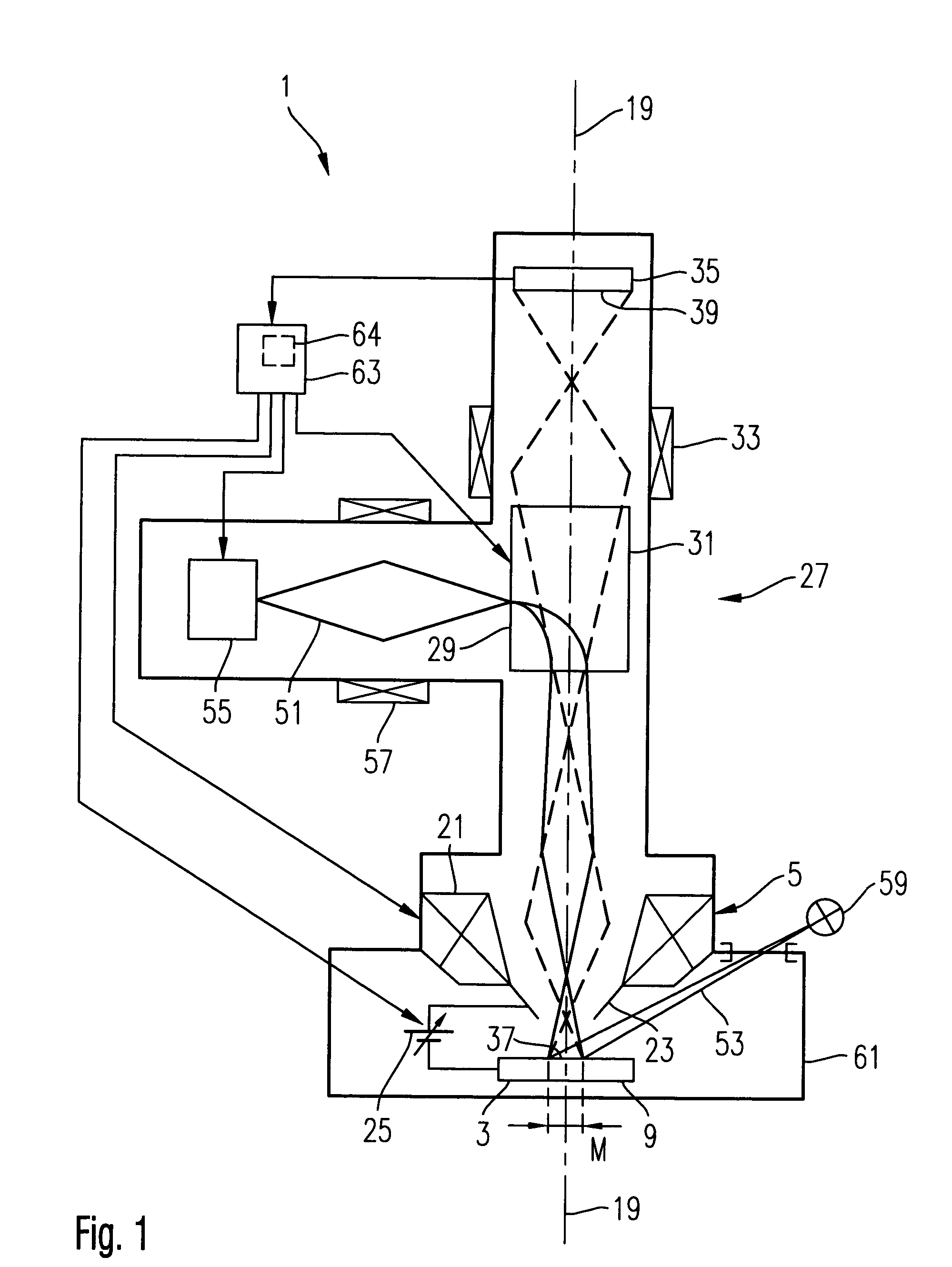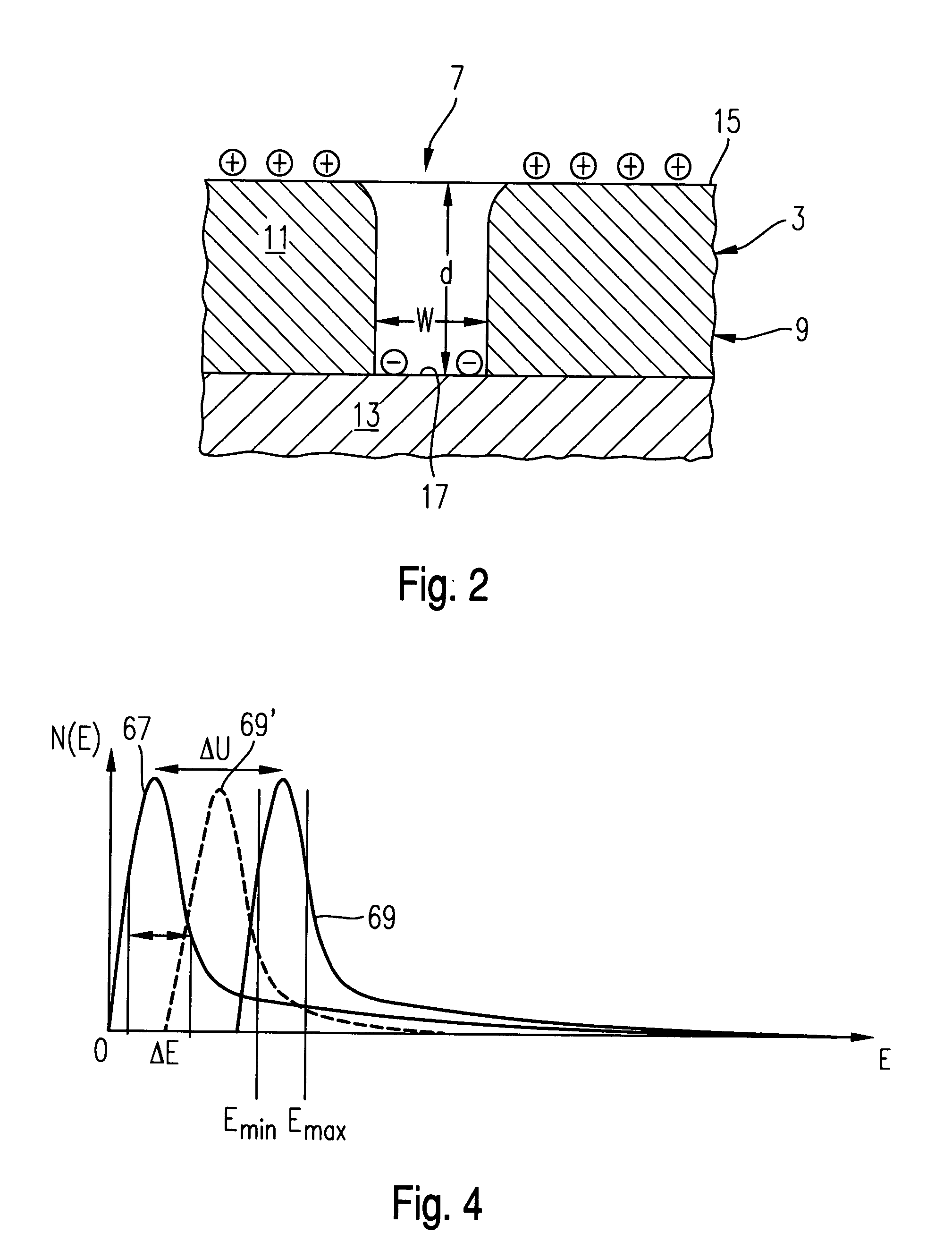Method for the electron-microscopic observation of a semiconductor arrangement and apparatus therefor
a semiconductor and electron microscopic technology, applied in the field of electron microscopic observation of semiconductor arrangements, can solve the problems of difficult image of structures with a high aspect ratio significant number of such secondary electrons cannot enter the objective of the microscope, and the inability to satisfactorily image deeper structures by means of sem
- Summary
- Abstract
- Description
- Claims
- Application Information
AI Technical Summary
Benefits of technology
Problems solved by technology
Method used
Image
Examples
Embodiment Construction
[0058] FIG. 1 schematically shows an electron microscope 1 which is suitable for implementing the method according to the invention. The electron microscope 1 serves to examine a semiconductor structure 3 which is positioned as object to be examined in front of an objective system 5 of the electron microscope 1.
[0059] The semiconductor arrangement 3 constitutes, for example, a part of a semiconductor wafer or the like and has a topology comprising structures with a high aspect ratio, as it is shown schematically in FIG. 2 with reference to a recess 7. The structure 3 shown in FIG. 2 forms part of a semiconductor wafer 9 and comprises a layer 11 of SiO.sub.2 of a thickness d of, for example, 2.5 .mu.m which is deposited on a layer 13 of a metal, such as copper, for example. The SiO.sub.2 layer 11 has an upper surface 15 which faces towards the objective system 5 of the microscope 1. The recess 7 is formed in the SiO.sub.2 layer 11 and extends from the surface 15 through the SiO.sub.2...
PUM
 Login to View More
Login to View More Abstract
Description
Claims
Application Information
 Login to View More
Login to View More - R&D
- Intellectual Property
- Life Sciences
- Materials
- Tech Scout
- Unparalleled Data Quality
- Higher Quality Content
- 60% Fewer Hallucinations
Browse by: Latest US Patents, China's latest patents, Technical Efficacy Thesaurus, Application Domain, Technology Topic, Popular Technical Reports.
© 2025 PatSnap. All rights reserved.Legal|Privacy policy|Modern Slavery Act Transparency Statement|Sitemap|About US| Contact US: help@patsnap.com



